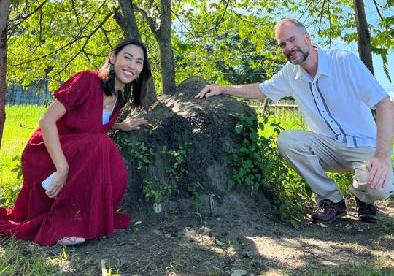BY: TYLER FISHER AND JHODSSIE ROCA ENRIQUEZ
One of the legacies Spain left the Philippine Islands (a Spanish colony from 1521 to 1898) is an elusive, supernatural species of dwarf known as a duende, conventionally transliterated duwende in Tagalog.
The Spanish colonists departed, but these little people stayed behind, lingering to this day in the imagination of the Filipinos. A similar phenomenon occurred in the Hispanic regions of Central and South America, where duendi and dwendi, among others, represent their linguistic vestiges in local lore, but the tiny tribe is nowhere more active than in the 7,000 islands of the Philippine archipelago.
A hundred years ago, Isabelo de los Reyes, the pioneering Philippine folklorist, noted that his countrymen
“hablan de bruja y de duende, pero conservando sus nombres castellanos, que revelan su procedencia. Los frailes y jesuitas nos trajeron sus supersticiones. Si llegáis a España, os sorprenderíais de que casi todas nuestras fábulas y supersticiones tienen idénticas allá” (La religión antigua de los filipinos, 1909).
Today, asking Filipinos about duendes, especially Filipinos from mountainous or rural regions, elicits a knowing smile and a twinkle in their eye. Everyone seems to have a story, first- or secondhand, of encounters with the enigmatic little people.
“They are like fallen angels,” 68-year-old Carlito Jalandoni told us, trying to reconcile his belief in the Christian Scriptures with his personal experience. “We don’t believe in duendes according to the Bible, but they’re here.”
Years ago, as a young father and farmer, Carlito had a duende in his house in Mabinay, Negros. The Spanish word duende is itself a contraction of dueño de casa, denoting a household spirit. Traditional Philippine houses were built high on bamboo stilts, under which ants and termites inevitably built their large mounds, attracted by household detritus and shelter from the rain. These mounds, Filipinos say, are duendes’ favorite haunts: a fantastic house within a house beneath a house.

Carlito returned home from the fields one day to find his daughter crying, her arms covered in bruises, as if beaten by an unseen assailant. “I asked her what had happened, and no sooner had the words left my mouth when I saw a rod lashing her, held by someone or something invisible.”
A duende appeared, and Carlito learned the cause of his daughter’s torment: the duende had asked to be her friend, but she had rejected him, and for this, in a rage all out of proportion to the situation, he repaid her with a beating. What’s more, the spiteful duende next turned his attention to ruining Carlito’s chili peppers, okra, and beans by the light of the full moon. “To keep them from ruining your crops, you need to be friendly to them. If they like you, they will help you in many ways.”
“Duendes are very small,” Carlito explained. “Sometimes you can’t see them.”
“They’re no taller than a human toddler,” his sister-in-law Estrella chimed in, pointing to a passing child. “Long whiskers hang from their wrinkled faces.”
Sixty-year-old Estrella Jalandoni, from the town of Candoni, has her own history of interactions with these creatures of fearful fascination. “Two duendes came to me in my dreams, and I saw them upon waking, but they vanished before I could touch them,” she recalled. “My father befriended a duende, who gave our family a sack of rice every month.”
Federico García Lorca, the great Spanish poet and dramatist, imagined the duende as something like the Greek daemon in Platonic philosophy: a guiding companion spirit, the genie of genius. For Lorca, the duende was a useful metaphor for moments of rapt inspiration in league with a distinctive, superior talent.
The mysterious duende represents the ineffable quality that distinguishes real artistry from uninspired efforts. Lorca’s artistic duende resonates with a key dimension of Philippine lore. “Some duendes can sing and tell stories, and can drive you to do the same,” Carlito said. “They can get inside you and make you a better or worse person.”
Centuries ago, as Spanish settlers encountered thousands of islands half a world away from their homeland, they brought with them this ambivalent figure. At the frontiers of human experience, the duende embodies the inexplicable elements of artistic inspiration, of human ability at geographical extremes, the threshold between dreams and waking: cultural interplay. Confrontations with the more ambiguous corners of the world’s mysteries awaken our drive to domesticate the unknown while recognizing that the most intense riddles of emotion, creativity, and coincidence are, after all, domestic. The dueños de casa live here among us.
You may also like
-
J Balvin Deslumbra en Orlando en su gira “Back to the Rayo”
-
Orange County Government Announces Events Celebrating Asian American and Pacific Islander Heritage Month
-
CALENDARIO DE EVENTOS
-
Entendiendo el Atractivo de los Dramas de Narcotráfico como Colombiana Viendo “Griselda”
-
Reconciling the Allure of Drug Dramas as a Colombian watching “Griselda”
















